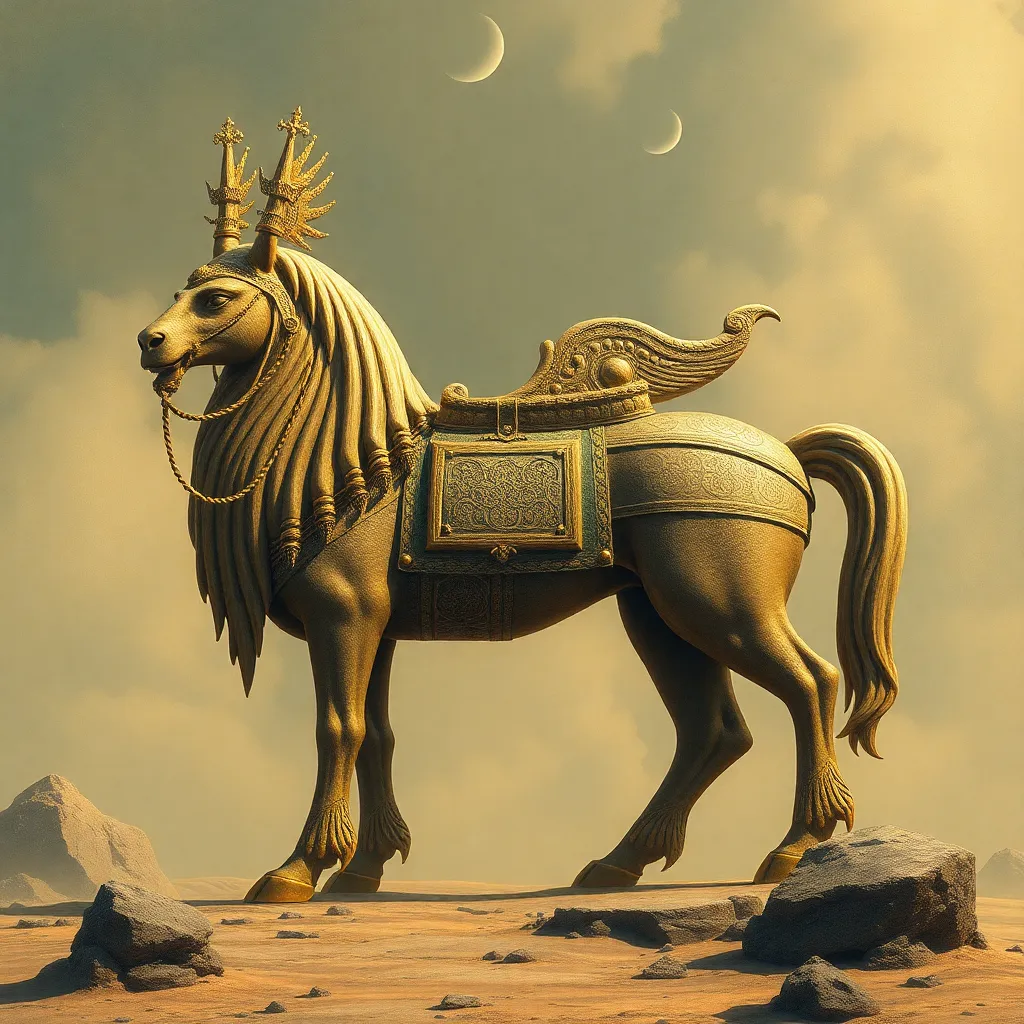The Lamassu in Persian Literature: Uncovering its Role in Epic Tales and Poems
I. Introduction
The Lamassu, a mythical creature adorned with the body of a bull or lion, the wings of an eagle, and a human head, has held a significant place in the annals of ancient Mesopotamian culture. These imposing figures served as protective deities and were often placed at the entrances of palaces and temples, symbolizing strength and divine guardianship. Their historical significance goes beyond mere sculpture; they represent an artistic and cultural amalgamation that has evolved over centuries.
Persian literature, rich in themes of heroism, morality, and the interplay of the divine and human, provides fertile ground for exploring the presence of the Lamassu. This literary tradition encompasses a wide array of epic tales and poetry, which often reflect the cultural and historical contexts in which they were created. This article aims to delve into the symbolism and presence of the Lamassu within these works, illustrating how they contribute to the overarching narratives of Persian literature.
II. Historical Context of Lamassu
The origins of the Lamassu can be traced back to ancient Mesopotamia, where they were revered as protectors of cities and sacred spaces. Their imagery, often carved in stone, conveyed a sense of safety and divine strength. As the Persian Empire expanded, the Lamassu became integrated into Persian mythology and art, evolving from their original Sumerian and Akkadian forms into symbols of Persian power and protection.
In Persian culture, the Lamassu transitioned from mere guardians of physical spaces to complex symbols within literary traditions. As Persian literature began to flourish, the Lamassu found its place in epic narratives and poetry, representing not only protection but also the grandeur and authority of the Persian kings.
III. Symbolism of Lamassu in Persian Literature
The Lamassu serves multiple symbolic purposes in Persian literature:
- Representation of Protection and Guardianship: The Lamassu is often depicted as a guardian figure, protecting heroes and noble characters as they navigate through trials and tribulations.
- Symbol of Power and Divine Authority: In the context of Persian kingship, the Lamassu embodies the strength and divine right of rulers, emphasizing the connection between the earthly and the divine.
- The Dual Nature: The Lamassu’s combination of human and animal traits symbolizes the unity of strength and intellect, a recurring theme in Persian epics where heroes must balance might with wisdom.
IV. The Lamassu in Epic Tales
One of the most prominent references to the Lamassu can be found in the Shahnameh (The Book of Kings), a monumental work by the Persian poet Ferdowsi. In this epic, the Lamassu emerges as a symbol of protection for the Persian heroes, guiding them through their quests and battles.
The role of Lamassu in these narratives often correlates with themes of heroism and valor. For instance, characters like Rustam, the legendary hero of the Shahnameh, encounter Lamassu imagery during their adventures, reinforcing their connection to divine protection and favor.
Other Persian epics also demonstrate the treatment of Lamassu, showcasing how different authors interpret this majestic creature in relation to their own narratives and themes. The Lamassu’s presence often serves to elevate the stakes of the hero’s journey, emphasizing the importance of divine support in achieving greatness.
V. The Lamassu in Persian Poetry
In classical Persian poetry, the imagery of the Lamassu is frequently employed to evoke themes of strength, protection, and the divine. Poets like Rumi and Hafez have integrated elements of Lamassu symbolism into their works, using it as a metaphor for the complexities of life, love, and spirituality.
Notable instances of Lamassu motifs can be observed in verses where poets reflect on the duality of existence, drawing parallels between the Lamassu’s protective nature and the need for inner strength. This blending of imagery often leads to profound emotional and philosophical interpretations, as poets explore the relationship between the material and the spiritual.
VI. Cultural Impact of Lamassu in Persian Literature
The influence of the Lamassu extends beyond ancient texts, permeating subsequent literary works and adaptations. Its symbolism has persisted, adapting to contemporary contexts while retaining its core meanings. In modern Persian literature, the Lamassu continues to be relevant, serving as a bridge between the past and present cultural narratives.
Furthermore, the Lamassu has found a place in cross-cultural literature, inspiring writers from various traditions to reinterpret its significance. Its universal themes of protection, strength, and duality resonate across different cultures, showcasing the Lamassu’s enduring legacy in global literary discourse.
VII. Artistic Representations of Lamassu in Literature
The visual depiction of the Lamassu in Persian manuscripts and illustrations further enhances its literary significance. Artists have portrayed the Lamassu in various styles, often reflecting the themes and narratives present in the texts they accompany. These illustrations serve to enrich the reader’s understanding of the Lamassu’s role within the stories.
The relationship between art and literature is crucial in portraying the Lamassu. Case studies of specific artworks reveal how artists interpret the Lamassu’s symbolism, often emphasizing its protective qualities and divine authority. This interplay between visual and literary arts provides a deeper appreciation of the Lamassu’s multifaceted nature.
VIII. Conclusion
In summary, the Lamassu holds a prominent place in Persian literature, symbolizing protection, power, and the integration of human and divine traits. Its presence in epic tales and poetry reflects the cultural values and historical significance of this mythical creature.
The enduring legacy of the Lamassu in cultural narratives is a testament to its versatility and relevance across time and space. As scholars continue to explore its role in literature, further research could reveal even more about the Lamassu’s impact on other literary traditions, enriching our understanding of this remarkable symbol.



